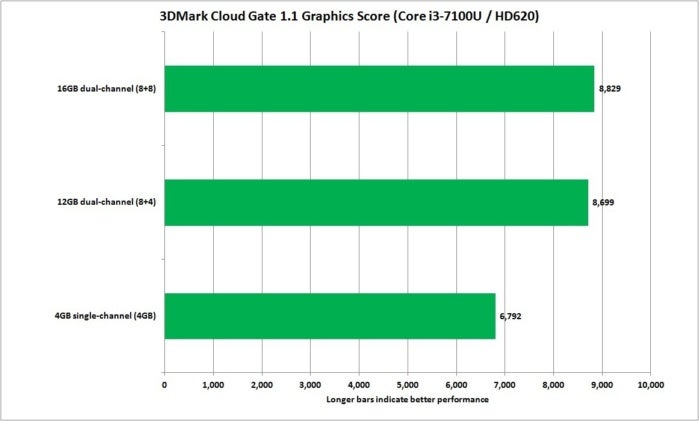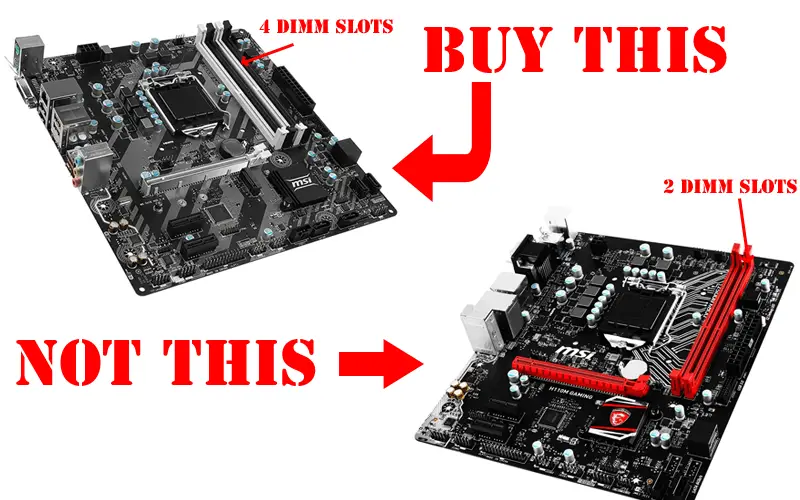4 Slot Vs 2 Slot Ram
Slots
This is the total number of memory upgrade slots (sockets) followed by their configuration. Banks are the way a system addresses memory. A bank must be completely filled with memory modules of the same size and type in order for the system to recognize and address the memory. i.e. :
3 (3 banks of 1) This indicates that there are 3 memory slots. These are divided into 3 banks, and each bank consists of one memory slot. So you can add memory one piece at a time for the system to use.
4 Slot Vs 2 Slot Ramp
4 (2 banks of 2) This indicates that there are 4 memory slots. These are divided into 2 banks, and each bank consists of two memory slots. So you must add memory two pieces at a time (they must be the same size and type of memory) in order for the system to benefit from the upgrade.
12 (3 banks of 4) This indicates that there are 12 memory slots. These are divided into 3 banks, and each bank consists of four memory slots. So you must add memory four pieces at a time (and they must be the same size and type of memory) in order for the system to benefit from the upgrade.
- 4 RAM Slots; 32Gb Max 16Gb needed; 2x8 or 4x4? - posted in Internal Hardware: Hello users! I have a small dilemma here, i have a dell precision m4600 laptop and I am at a fork in the road so to.
- Most budget to midrange boards will either have two or four memory slots. I have a Gigabyte B450 DS3H with 4 memory slots and dual-channel support. If you have two slots and your motherboard supports dual-channel, setting it up is often as easy as just inserting a second memory module and booting up. Courtesy: GamersNexus. If you have 4 slots.
If you wanted 64gb of ram in 4 ram slots and you went with Samsung B-Die IC's or non-Micron, you'd get 16gb modules with memory IC's on both sides of all 4 dimms which equals 8 ranks since each dimm is dual ranked (512-bits). This could overload your CPU's Memory Controller, limiting your OC to your CPU AND your Memory. The slots having the matching colors are paired, so a matched set of memory modules would plug into the slots having the white tabs, and likewise for the slots having the black tabs. For best performance you need to install memory beginning with the first slot, which is usually a white tab, I think. Today we answer the question, does which ram slots you use matter in modern systems in gamesGrab some ram here: the z270 baord he.
In this blog, you will learn about the difference between low voltage RAM modules and standard RAM modules. And then there’s the primary question: Which one should you get for your computer system?
What are Low Voltage RAM Modules?
The low voltage Memory Modules are a newer generation of computer memory. The term ‘low-voltage’ implies that the RAM requires less power (1.25V or 1.35V) to operate at 1600MHz. On the other hand, the normal RAM modules deliver the same result at 1.5V or 1.65V. This translates into low stress on the CPU and more space for overclocking at a higher voltage.

WORD OF CAUTION: It should be noted that low voltage RAM will not be supported by all motherboards. Make sure you check the specifications of your motherboard before ordering low voltage DIMM modules online.
Which is better: Low Voltage RAM modules or High Voltage (Normal) RAM Modules?
A LV module is preferred because it consumes less electricity and provides the same speed. Although it doesn’t matter much for normal use, the ability of these RAMs to work on low voltage becomes a significant factor for overclocking.
For example, a 1.25V RAM module operating at 1600MHz can be overclocked to 1866MHz or even up to 2133MHz. A 1.5V Memory probably cannot be overclocked this way.

This is one of the many reasons why low Volt Memory Chips are better than High Voltage RAM modules.
Can You Mix Low Voltage and High Voltage RAM Modules?
Yes, a low voltageMemory Chip can work normally with a high voltage Memory module because it is backward compatible. A motherboard that doesn’t support a low voltage RAM (1.35V) will run it at 1.5V because of this backward compatibility feature.
However, it is not advisable to mix these RAM Modules as doing so may diminish the useful life of these components and lower system performance.
4 Slot Vs 2 Slot Ram Ideapad 100
Things to note:
- A low voltage DIMM module is backward compatible and includes 1.25V and 1.35V RAM memory.
- On most memory module packets, the low voltage RAM can either be written as 1.35V or ‘DDR3L’, where ‘L’ stands for ‘Low voltage’ or ‘LV RAM’.
- If Low Voltage DDR3L RAM is not supported by a motherboard, it will run at the normal voltage of 1.5V.
Bottom-line:
If your system supports low voltage DIMM modules, then you can buy them without second thoughts. If it doesn’t, you can still buy these but know that they will run at the normal voltage. For most people, the price is a limiting factor. So if the price difference is low, invest in the modern technology (low voltage RAMs) that’ll stay relevant for several years.
4 Slot Vs 2 Slot Ram Upgrade
The explanation of techie topics is best consumed in textual format. But for those, who are more of visual persons, the video is available here: